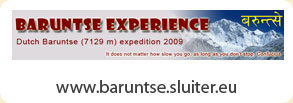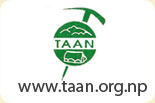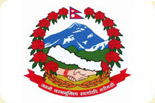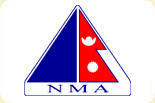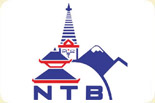Day 01: Arrival in Kathmandu airport (1350m) and transfer to hotel.
Day 02: Sightseeing Pashupati, Boudda, and Shwyembhu (monkey temple) & transfer to hotel. Pashupatinat Temple: After breakfast drive to Pashupatinath Hindu Temple 28 kilometer North-west from Nagarkot is the holiest of all the Shiva shrines in Nepal and is the above of Lord Pashupatinath, the guardian spirit of Nepal. The temple of Pashupatinath is a large double-roofted pagoda of brass and gilt; the gateway is plated with silver. It stands on the western bank of the Bagmati about five kilometer north-east of Kathamndu and contains the sacred linga of Lord Shiva. Before the temple stands an enormous gift filguree of the bull Nandi, the mount of Shiva, flanked by a golden trident. There is a crematorium outside the temple by the side of the wide but shallow river and the wood surroundings are dotted with small shrines. On the occasion of the annual festival of Maha Shivaratri (February / March), the temple is visited by thousand of devotees including a large number of pilgrims from India. The temple is also the site of a number of other festival and ritual taking laces throughout the year.
Bouddanath Stupa: This colossal stupa, one of the biggest in the wourld, is situated 2 kilometer north from Pashupatinath. The splendid some of Bouddhanath Stupa is approximately 120 ft in diameter, 1hec in width and 43m in height. Its simplicity of form is its principal feature, unique among monumental stupas in the valley in its lack of the appended five shrines of the Buddha. Some consider it represents fht Adibuddha, the first or Primordial Buddha, free of conceptual emanations. Only the steps built into it on the north side, seemingly the ladder that Sakyamuni ascended into Tushita heaven, breks its uniformity. A thick layer of whitewash coast the dome and the form of a bouble lotus depicted in saffron water colors it. This can be sponsored on various auspicious dates, and is also done annually on Dasain Purne occurring on the Full Moon in September by the Bouddhanath Area Development Committee. Bouddanath the dome, is an addes terrace with a remarkable 108 niches filed with stone sculptured deities of the Nyingmapa School's pantheon. They replace the usual five Buddha shrines in defining the content of the stupa-mandala, these images were almost certainly commissioned all at once by Sakya Zangpo in the 16th century, when the persent stupa was buit or thereafter. On the top of the Stupa, there are five symbols of Water, Eather, air, fire, earth.
Swyambhunath (Monkey Temple) 10 kilometer west from Bauddanath stupa. It is said to be two thousand years ole, making it one of the world's oldest and glorious Buddhist chaityas. The Chaitys (Stupa) which foarms the main structure is composed of a solid hemisphere of brick and earth supporting a ofty conical spire capped by apinacle of gilt copper. Pinted on the four-sided base of the spire are the al-seeing eyes of Lord Buddha. It is stand a hill as Stupa style.
Day 03: Sight Seeing Patan, Bhaktapur and Nagarkot. Overnight at Nagarkot.
Drvie to Patan City:
The ancient city Patan is Lalitpur meaning, city of beauty. It is indeed a city of beauty ad grace and is planned on a circular format with Buddhist stupas at each of the four points of the compass. The city is three Km south east from Kathmandu across the Bagmati river. The city is full of Buddhist monuments and Hindu temples with fine bronze gateway, guardian deities and wonderful caving. Noted for its craftmen and metal workers, it is also known as the city of artists. The city is bellived to have been built during the reign of Vira Dev in A.D 299.
Patan Durbar Square, Krishna temple, Hiranya Varna Mahavihar, Kumbeheshwar, Jagate Naraya, Mahaboudda, Rudra Varna Mahavihar, Ashoka Stupas, Machhendranat Temple, Tibetian camp are main attraction of Patan city.
Drive to Bhaktapur city: 30 minute east from Patan city.
Bhaktapur city is museum of medivedual art and architecture with many fine example of sculpture, woodcarving and colossal pagoda temples consecrated to different gods and goddesses. The city is shaped like a conch shell-one of the emblems of the god Vishnu and was founded by Kind Ananda Beva in A.D. 889. The city is 1402m above sea level. Pottery and weaving are its major traditional industries. The city lies fifteen kilometer to the east of Kathmadu.
Sidda Pokhari (lake), Royal palace, The lion gate, The golden gate, The palace of Fifty Five Windows, The picture gallery, The statue of King Bhupatindra Malla, Bastala Temple, The Pashupati Tempe, Nyatapola Temple, Bhairab Nath Temple, Dattatraya Temple, Mayur Jhyal (Peacock windows) etc are main attraction here.
Drive to Natarkot for Mountain views 16Km east from Bhaktapur.
Nagarkot 32 kilometer east of Kathmandu, is one of the most scenic spots in Bhaktapur district and is renowned for its spectacular sunrise view of the Himalaya when the weather is clear. Visitors often travel to Nagarkot from Kathmandu to spend the night so that they can be there for the breathtaking sunrise. Nagarkot has acquired famous as one of the best spots to view Mount Everest as well as other snow-topped peaks of the Himalayan range of eastern Nepal. It also offers and excellent view of the Indrawati river valley to the east. With an elevation of 2195 meter, Nagarkot also offers a panoramic view of the Valley and is described by visitors as a place whose beauty endures year round
Day 04: Drive to Kathmandu and Fly to Pokhara and half day valley sight seeing. O/N at hotel.
Check In Hotel then Boat riding in Phewa Lake:
It is the second largest lake in Nepal and lying at an altitude of 784 m (2,572 ft) it covers an area of about 4.43 km2 (1.7 sq mi) with an average depth of about 8.6 m (28 ft) with maximum water depth is 22.8 m (75 ft) when measured with echo-sounder (depth measuring gauge; PLASTIMO ECHOTEST II) on 5 December 2009. Maximum water capacity of the lake is approximately 46 million cubic meters (37,000 acre feet) Annapurna looms in the distance from the lake and the lake is famous for the reflection of Mount Machhapuchre on its surface. The holy Barahi mandir (temple) is situated on the island located in between in the lake.
Pokhara has places of geologic interest to visit, such as the Seti River george which follows some ninety-one meter below ground level, Davis Falls (called Patle Chhango), where cascading water vanishes underground and Mahendra cave. Gupteswar Gupha, a sacred cave on the Siddhartha Highway leading southwest from the city. This cave holds special value for Lord Shiva as well as Mahendra Gupha known as Chamero Odhar (house of Bats) is the large limestone cave. Bindabashini temple has religious activity in the old bazaar and dedicated to goddess Bhagawati manifestation of power. Pokhara World peace pagoda, massive of Buddha is situated on top of a hill on the southern shore of Phew Lake.
Day 05: Drive to Sarangkot to snap of Annapurna mountaineering view come back to hotel and Drive to Chitwan National Park.
Sarangkot 28° 14' 39.1596" N, 83° 57' 24.1344" E is the most popular tourist destination from where the tourist can enjoy the great view of the Pokhara valley and the magnificent view of the mountains of Annapurna 8091, Khangsar Kang 8485m, Annapurna II 7937m, Machhapuchre 6997m, Lamuung himal 6983m, Annapurna III 7555m, Annapurna IV 7525m, Tarke Kang 7193m. Sarangkot is only 5 km from Lake Side. Sarangkot is the highest view point for a sunrise and it is just 1592m high. Sarangkot is 5 degrees cooler than Pokhara.
Sarangkot can be reached easily by 45 minutes by a taxi ride to the top and then 45 minutes hike up to the main view point. Many tourists come to Sarangkot for sunrise view and go back after few hours but it will be good if tourist stay there for one night and enjoy the view and city light of Pokhara from Sarangkot. Paragliding can also be done from Sarangkot. Tourist can also have a breakfast at one of the hotels in Sarangkot and do the small trek up to Deurali and walk down to the highway and then take the bus back to Pokhara.
Drive to Chitwan National Park which coverage 932sq km, Hotel Check In, Lunch then start bellow tour program:
Village tour & sunset Program:
The Jungle scenery, birds and animals alone do not make up the unique features of Chitwan National park. The indigenous local People, the Tharus are also of Immense interact. A professional Expert naturalist will accompany you though the area and help you gather insights into the tharu way of life. After five o’clock our guide conveys you to sunset Point, from where you may watch incredible view of village, forest and Rapti River.
Tharu culture program:
The “Tharu”means that Local community of people in Chitwan. The people are the indigenous inhabitants of the tarai reason of Nepal and have been the caretakers of the tropical forests of Nepal for centuries.Todays; there culture is a most vibrant one, with tharu dances being demonstrated and exhibited in lodges and in their community center.
After diner their will be those kind of program in Lodge every evening.
Elephant safari:
Elephant’s safari is one of the most popular activities in Chitwan National park in outside and inside the park. Times and experience have provide that the best way to view animals in the wild is from atop an elephant. In chitwan we take you by Elephant back safari to view the wildlife in its national habitat. Safety and security being our first concern, you will always be accompanied in the jungle, by one of our professional guides or naturalist. This is a unique once in a life time experience and great opportunity to see wildlife. Such as different kinds of deer, rhinoceros, bore, monkey, leopard, sloth bear and the Royal Bengal Tiger (If you are lucky). You will also encounter many other smaller mammals that have made Chitwan their home.
Jungle walk & Bird Watching:
On a bird-watching trip, you will be guided by a Native Naturalist thought the grassland of chitwan national park. There are hundreds of migratory and native birds that you can catch a glimpse of at shooting range but just make sure you do it with a camera. We suggest you take a jungle walk with our professional Guides. This enables you to see birds and other wildlife at close range. Jungle walks are usually carried out in small groups and are escorted by Professional guides. Jungle walks comprise of an exhaustive observation of the diverse special found in the park from insects.
Day 06: Chitwan Tour & Drive to Kathmandu/ Fly Bharatpur to Kathmandu
Bird Watching:
After tea or coffee we will go to the bird watching. There are more than 450 species of birds. We will visit around bank of Rapti River.
Elephant Bathing:
One of the main attractions is bathing and swimming with elephant at the Rapti River in chitwan national park .You can also participate in helping the mahout to bathe with Elephant. Chitwan in lit bit hot Tempter in Nepal then other area so you may swim with Elephants and have lots of fun.
The Jungle scenery, birds and animals alone do not make up the unique features of Chitwan National park. The indigenous local People, the Tharus are also of Immense interact. A professional Expert naturalist will accompany you though the area and help you gather insights into the tharu way of life. After five o’clock our guide conveys you to sunset Point, from where you may watch incredible view of village, forest and Rapti River.
After Lunch we will drive to Kathmandu. O/N CULTURE MIXED FOLK DANCE WITH NEPALI DINNER.
Day 07: Everest Mountain view in Everest region by airlines e.g. Mt. Everest, Lhotse, Cho-Oyu, Amadablam, Makalu, Baruntse, Nuptse etc
Visit Thamel / hopping / Final departure to Airport. |

